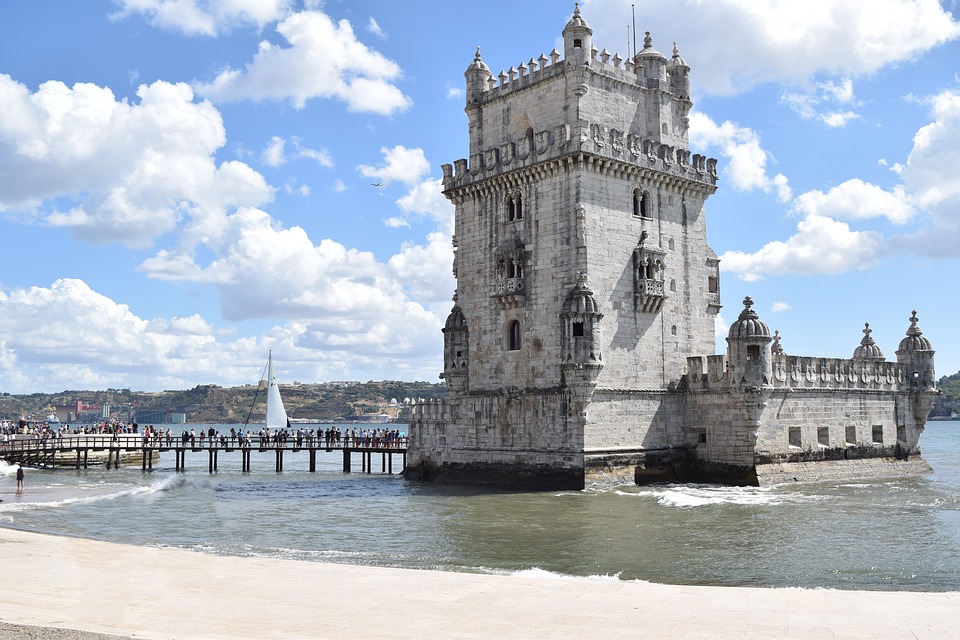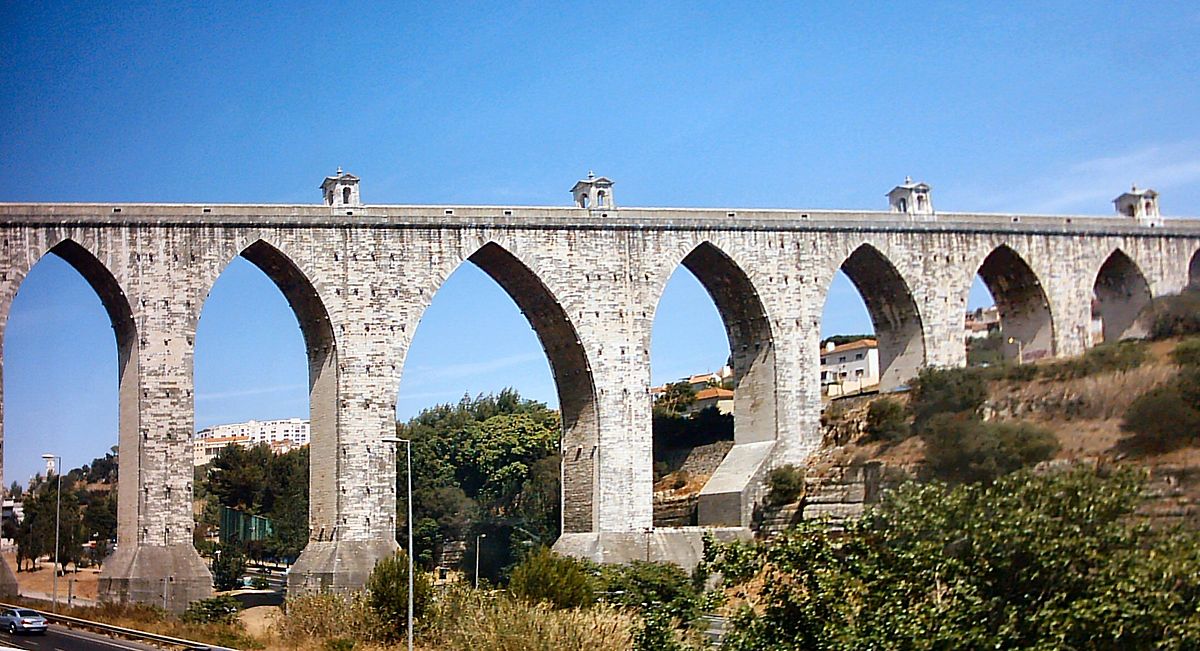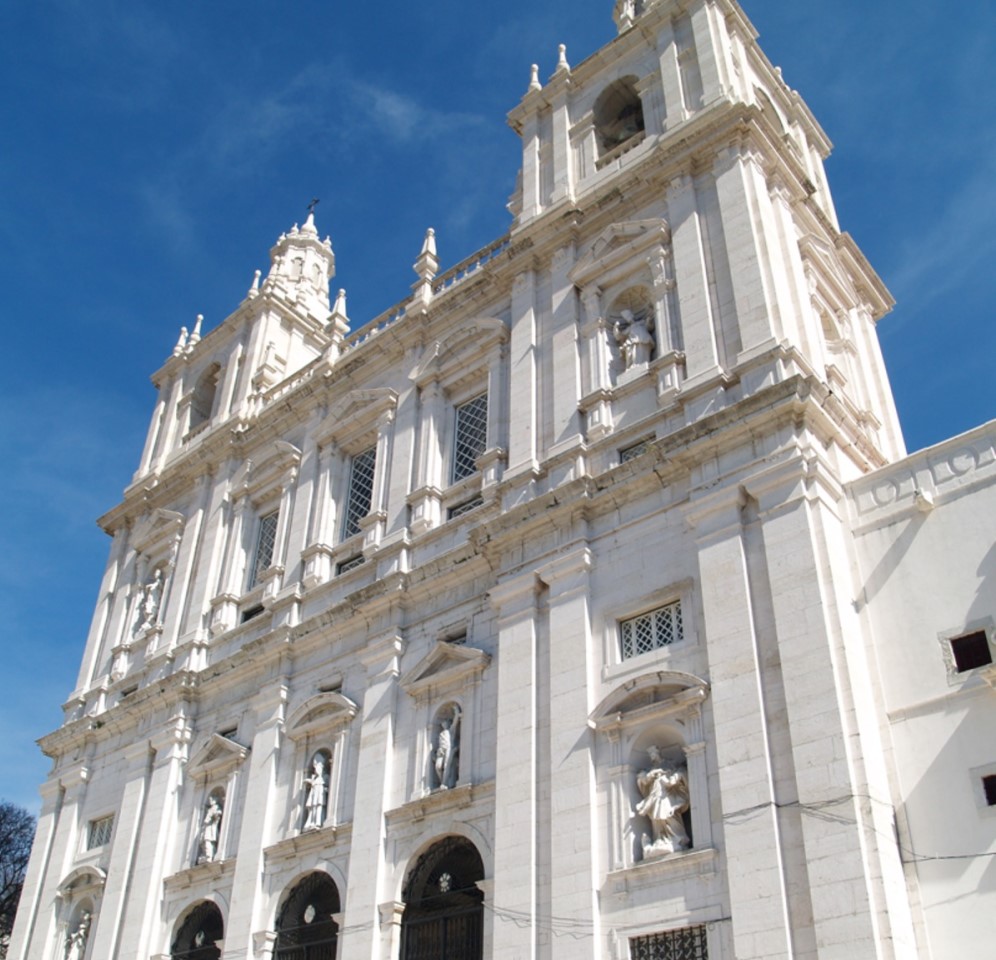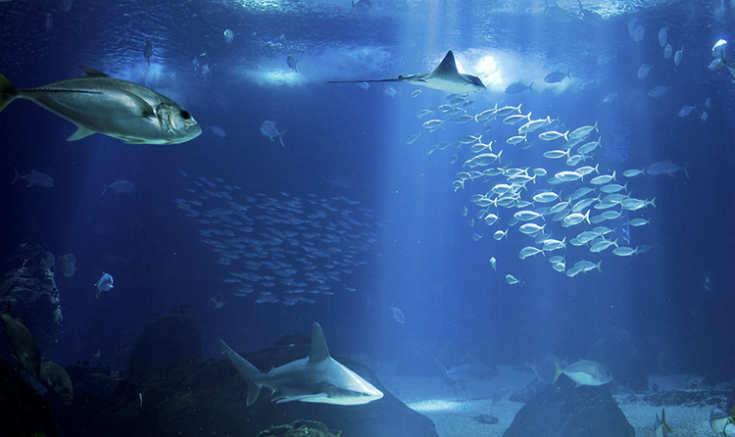Tour de Belém
A trip to the capital should take in the Torre de Belém, a UNESCO world heritage site and one of Portugal’s most famous monuments.
The Gothic tower was built to guard the entrance to the harbour and has some fine examples of Portuguese stonework dating from the 1500s.
The Tower of Belém was put up to guard the river entrance into Lisbon harbour. Built on the orders of Dom Manuel the Fortunate, it has stonework motifs recalling the Discoveries, among them twisted rope and the Catholic Crosses of Christ, as well as Lisbon’s patron saint St Vincent and a rhinoceros.

Aqueduto das Águas Livres
Central Lisbon is relatively compact, and traffic can be awful, so it’s best to explore on foot. Get an idea of its layout and all things to do in Lisbon from the top of the Aqueduto das Águas Livres – the city’s majestic aqueduct, erected in the 18th century under King John V. Go in the morning or late afternoon to escape the crowds and get an unrivalled view of Monsanto forest and the city’s sprawl.
Lisbon’s aqueduct spans the Alcântara valley. Construction began in 1731, and by 1748 the first water was flowing from a source 58 kilometres to the north-west. It bridges the valley on a series of 35 arches, the largest of which rises 64 metres from the ground; giddy heights indeed when you walk along the parapet. When built, these were the tallest stone arches in the world.
They were sturdy too – they survived the 1755 Earthquake unscathed. The aqueduct was taken out of service in 1967. Guided walks, taking in some of the surrounding area, can be booked through the Museu da ígua.

Igreja de São Vicente de Fora
One of the mandotory things to see in Lisbon during your stay. Portugal’s first king, Afonso Henriques, laid the foundation stone for the first church of St Vincent ‘Outside’ – that is, beyond the then city walls – hardly a month after taking Lisbon from the Moors in 1147.
He was fulfilling a vow to construct Christian houses of worship on the sites where Portuguese soldiers and northern European crusaders lay buried. The big draw are the cloisters, richly decorated with early 18th-century tile panels, some illustrating La Fontaine fables.
Inside there’s the royal pantheon of the Braganza family, the last dynasty to rule Portugal. The figure of a weeping woman kneels before the twin tombs of Dom
Carlos I and Crown Prince Luís Filipe, shot by assassins in 1908.
Portugal’s first king, Afonso Henriques, laid the foundation stone for the first church of St Vincent ‘Outside’ – that is, beyond the then city walls – hardly a month after taking Lisbon from the Moors in 1147. He was fulfilling a vow to construct Christian houses of worship on the sites where Portuguese soldiers and northern European crusaders lay buried. In 1580,
Portugal’s then ruler King Philip II of Spain decided to start from scratch and brought in his own architect, Juan Herrera (builder of the Escorial). With Italian architect Filippo Terzi, Herrera designed a new church in Italian mannerist style.
It was inaugurated in 1629, but was severely damaged in the 1755 earthquake, when the main dome and roof collapsed on a crowd of worshippers. The big draw are the cloisters, richly decorated with early 18th-century tile panels, some illustrating La Fontaine fables.
Inside there’s the royal pantheon of the Braganza family, the last dynasty to rule Portugal. The figure of a weeping woman kneels before the twin tombs of Dom Carlos I and Crown Prince Luís Filipe, shot by assassins in 1908.

Lisboa Story Centre – Memories of the City
Built on the hills bathed by the Tagus, and overlooking the Atlantic Ocean, Lisboa is a fascinating mosaic of memories, stories and influences that still mark the urban landscape of this unique city. The various events that make up its history and some of its protagonists are now presented at Lisboa Story Centre, where all who visit the Portuguese capital are invited to make a trip back in time and discover memories of Lisboa, since its foundation until present day. In a playful and interactive way whilst respecting the historical accuracy that a city with Lisboa’s past deserves, this interpretation centre takes visitors on a journey through space and time with an audio guide system presenting historically accurate events and dramatic scenes of the city’s different eras.

Oceanário de Lisboa
Considered the best aquarium in the world by Tripadvisor, in 2015 and 2017, Oceanário de Lisboa creates emotions through the oceans and its 8,000 marine creatures. Among these, rays, coral reefs, sharks and sea otters. An experience that everyone wants to live. Touring through the permanent exhibition is an exalting experience for the senses. A big central aquarium, with five million litres of saltwater, symbolizes the Global Ocean. Surrounding this big aquarium, four marine habitats create the illusion that there is only one aquarium. The visit it’s between two levels, at surface and underwater. The temporary exhibition, “Forests Underwater by Takashi Amano”, presents tropical forests and their aquatic systems through the largest nature aquarium in the world, created by the famous aquascaper, Takashi Amano. An experience of pure engagement with these environments, where art, beauty and nature are perfectly connected.

Pilar 7 Bridge Experience
Located in Alcântara (Avenida da Índia), this interactive centre allows all visitors to have a unique experience of the bridge – considered one of the prettiest in the world – via a tour that takes in the exterior areas of this key pillar and the sensory experience of visiting its interior. It is a trip through the history of its construction and ends with an elevator ride up to a panoramic viewing point that provides an unrivalled view of the city and the river. Making use of modern multimedia devices, your visit ends with an immersive virtualreality experience of parts of the bridge that are inaccessible and a call at the PhotoBooth so you can record this unforgettable moment.

